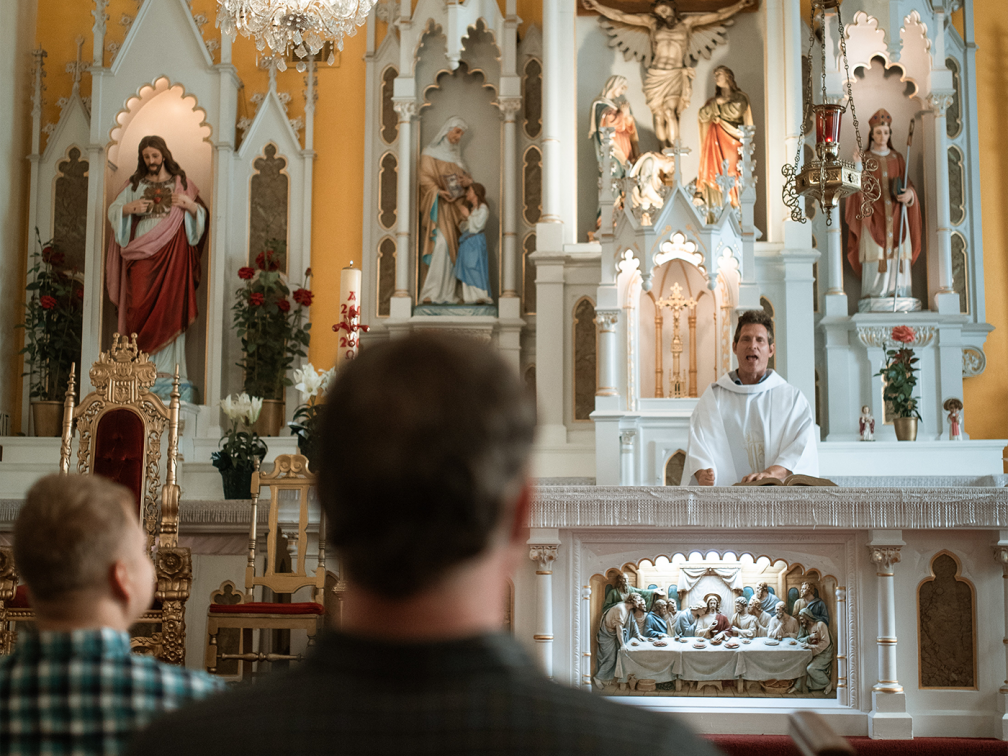As the synodal journey continues, I often get ‘feedback’ on the state of the Church from lay people, including members of my own family. Their comments sometimes question the life-style of us priests and why so many continue to wear ‘black’ clerical shirts and ‘big white collars’.
My experience in the Philippines was that I never wore a clerical collar! ..I never owned one!!!
The local custom of clerical dress didn’t include the wearing of a dog collar. On formal occasions priests are commonly seen in a white shirt with a small medal cross on the collar. White cassocks are worn around the church and take the place of the ‘alb’ for liturgical use.
Since I have been home, I have been influenced by my missionary experience in the Philippines and generally I don’t wear a clerical shirt with collar unless the occasion demands. e.g. wedding/ funerals etc. or where it seems important to be recognised as a priest out of respect for those hosting such events. The practice here at home in UK / Ireland has traditionally been for priests to wear a clerical collar / shirt for most occasions formal and informal but for some priests this practice has gradually changed.
I have felt for some years that the image of the priest is in need of reform and ‘clericalism’ has been the root cause for these reforms. Maybe the clerical collar is just one symbol of clericalism which has come to represent much of what is wrong with the Catholic priesthood?
What is clericalism? The Association of U.S. Catholic Priests put out a white paper on clericalism in June 2019. It defines clericalism as “an expectation, leading to abuses of power, that ordained ministers are better than and should be over everyone else among the People of God.” If the priesthood is to be reformed, we must tackle the disease of clericalism. It won’t be easy. Clericalism is so deeply ingrained in our structures and way of thinking that we almost can’t imagine how things could be otherwise. In his 2018 “Letter to the People of God,” Pope Francis condemned the sins of sexual abuse and the abuse of power in the church. He linked those sins to clericalism. “To say No to abuse is to say an emphatic No to all forms of clericalism.”
There now seems to be a widespread belief that clerics (bishops and priests) are sometimes trained to think that they are set apart from, and set above, everyone else in the church, that their word is not to be questioned, their behaviour is not to be questioned, their lifestyle is not be questioned, ruling over the church as if they were feudal lords in a feudal society, with all the perks that go with “superiority.”
According to this line of thinking, it is not just clerics who are clerical; the laity often fosters clericalism by always deferring to “Father” and putting “Father” on a pedestal, with clericalism being experienced in thousands of words and deeds that add up to a “culture” or atmosphere.
Is clericalism being shown –
- when we say, “Nothing is too good for “Father”?
- when the priest says, “This is my parish. My way or the highway”?
- when young aspiring seminarians wear clerical garb to set themselves apart?
- when parents tell their children, “Never question a priest”?
- when people say that “the priests are ‘next to God’ “?
- when bishops prioritise avoiding scandal over protecting victims of abuse by priests?
- when thriving parishes are closed because there is a shortage of priests but where there are deacons and lay people readily available to keep the community going?
Pope Francis sadly has experienced much opposition to his reforms from many bishops and priests who are reluctant to acknowledge that ‘times they are a changing’. Perhaps it is now time to put an end to clericalism and recognise the gifts and talents of the laity, and particularly women, to take our Church forward to a new and brighter future.

